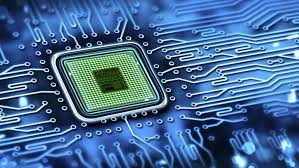The China-Taiwan Semiconductor Question
With the recent visit of House Speaker Nancy Pelosi to Taiwan, as well as the passing of the CHIPS Act, the public and the media have more questions than ever regarding the semiconductor market. Primary among these is: what is the exposure to Taiwan of a Chinese attack and what is the risk of a semiconductor shortage?
The response of the federal government is that the CHIPS Act will create a semiconductor industry here in the United States. This is a fallacy. Based on discussions I was engaged in at a recent a Supply Chain Executive Summit hosted by Avnet, (which included leaders from top brands in the industrial, communications, computing, consumer and medtech sectors as well as contract manufacturers and both semiconductor and IP&E suppliers), many felt that this was a public policy action, but would have very little short-term impact on the semiconductor industry. In fact, building a domestic chip industry would be a multi-year initiative, and if China did invade Taiwan, the impact on the overall supply chain would be immediate and would shut down the entire global economy.

Taiwan hosts the majority of the major Original Design Manufacturers, who in turn rely on supply chains that are entirely based in Taiwan and China. Contract manufacturers are very reliant on semiconductors produced in Taiwan. As many organizations consider how they can de-risk their supply chains, the push towards producing closer to the customer is becoming another important theme, particularly for products that are not sold or marketed in these manufacturing regions
Visitors to China have downplayed the likelihood of an attack on Taiwan. For instance, a Western executive mentioned that Chinese partners urge him to “Just don’t talk about it!” The prevailing mindset among technology companies in the region seems to be that Taiwan may be part of the Chinese government’s long-term plan, in say 30 years, but for now, these business leaders don’t want the distraction.
The potential consequences of a Chinese takeover of Taiwan are, however, too momentous to ignore. Learning more about semiconductors and Taiwan is important to understand the issue with more clarity.
What does it take to produce semiconductors?
The reality is that producing semiconductors is very, very difficult. Experts call it “voodoo magic”, because of the delicate and challenging process of producing them. Taiwanese engineers have unique capabilities – and it requires hundreds of engineers with very specialized and unique capabilities to understand each of the 600 steps in the semiconductor manufacturing process. Each step requires specific engineering knowledge and capabilities – and China cannot replicate this knowledge. They have tried but failed. Every single one of the hundreds of discrete steps must all be performed flawlessly, or the entire wafer will fail, or the yields will be so low as to not be useable in modern technologies.
For this reason, China has worked hard to recruit engineers away from Taiwan with lucrative salaries. However, as noted, they cannot get all of the engineers from every step to support them. In addition, a lot of countries such as Germany, Japan, and the United States have been trying to get TSMC to expand and build facilities in their countries, also offering incentives to regionalize their operations. However, the cost of labor is prohibitive in many of these regions, as is the lack of capability required to manufacture chips. As such, it will take years (if not decades) for chip production to expand.
To give an idea of how entrenched the semiconductor industry is in Taiwan and TSMC, consider the following:
- The country of Taiwan has fewer than 100 golf courses. But it has more fabrication facilities than golf courses! And most of these are high end production facilities, capable of producing high yield chips for most of the electronics produced in the world.
- To support this infrastructure requires enormous energy resources. Ten years ago – TSMC consumed about 3% of the country’s electric energy generated. Today it is estimated that they consume more than 10% of the country’s energy. TSMC alone requires two or three power plants to power its energy consumption requirements on an annual basis!
- Many of the chips used in electronics today are 28 nanometers or greater. For these larger chips, much of the equipment in the fabs is depreciated – that is, they are dedicated to producing these chips for consumers, and the margins on them are relatively low. However, 88% of all new capital expense investment is dedicated to 28 nm or smaller, which are also much more profitable as they can be sold at a premium. But very few electronics products use these types of chips, and use the “workhorse” chips that are larger and more reliable.
For these reasons, converting Arizona into the next Taiwan Silicon Valley is multi-decade proposal! It would require a lot of new training and talent, many new innovative enterprises to supply the fabs, and significant levels of investment. (This was one of many reasons Wisconsin did not materialize as a fab location, as they simply did not have the ecosystem to support these requirements!). Creating a domestic semiconductor industry would require 20to 30 years of investment to support the requirements for this infrastructure. It is not just about constructing a fab, or government threats to TSMC to take away their business unless they build in the US – making this shift will require decades.